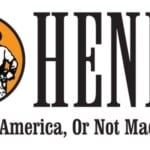
Introduction
The story of the Peabody Martini Creedmoor rifle is deeply woven into the fabric of 19th-century firearms innovation, competitive marksmanship, and the evolution of precision shooting. A product of meticulous engineering and technological progress, this rifle represents one of the finest examples of the transition from muzzle-loaders to sophisticated breech-loading rifles. Its legacy, though often overshadowed by military counterparts, remains pivotal in the history of long-range shooting.
Origins and Development
During the mid-19th century, firearms technology underwent a dramatic transformation. The adoption of metallic cartridges revolutionized reloading efficiency, accuracy, and overall firearm reliability. The Peabody rifle, developed by Henry O. Peabody in the early 1860s, played a crucial role in this transition. Peabody’s design featured a falling block action, a robust and efficient mechanism that allowed for quick and reliable cartridge loading.
Peabody’s original rifle, however, required the shooter to manually cock the hammer before firing, which slightly hampered its rate of fire. This shortcoming was later addressed by Swiss engineer Friedrich von Martini, who refined the action by integrating an internal striker-fired system that cocked automatically upon cycling the breech. Martini’s adaptation streamlined the rifle’s operation and made it faster to fire successive shots, a key advantage in both military and sporting applications.
The British recognized the value of this improvement and adopted it in their Martini-Henry rifle, chambered for the .577/450 Martini-Henry cartridge. Meanwhile, in the United States, a specialized variant of the Martini design was developed for precision shooting—the Peabody Martini Creedmoor rifle. This version was tailored to the growing popularity of long-range target competitions, particularly those held at the famed Creedmoor Range in New York.
The Role of the Providence Tool Company
The Providence Tool Company of Providence, Rhode Island, was instrumental in the manufacture of both Peabody and Peabody-Martini rifles. Founded in 1846 as a general tool manufacturer, the company shifted to firearms production in the wake of the Civil War. Peabody approached the firm with his rifle design, and from 1866 to 1871, Providence Tool Company produced Peabody rifles for military contracts worldwide, including Canada, France, Spain, and Romania.
The Providence Tool Company built falling-block rifles around the Peabody action beginning in the 1860s. In the 1870s, shooters adapted these rifles for precision competition at Creedmoor Range in New York with long barrels, heavy recoiling cartridges, and finely adjustable sights — earning them the descriptive label ‘Peabody Martini Creedmoor’ among target shooters, though this was more a functional classification than a formal product designation.
Creedmoor Matches and the Rise of Long-Range Shooting
In 1874, the first Creedmoor long-range shooting competition was held in New York, marking a turning point in precision marksmanship. American shooters, using specially designed rifles including the Peabody Martini Creedmoor, squared off against the best European marksmen. These events showcased the capabilities of advanced breech-loading rifles and solidified the importance of specialized firearms for extreme accuracy at extended ranges.
The Peabody Martini Creedmoor rifle quickly gained favor among competitive shooters due to its inherent accuracy, well-balanced design, and powerful chambering options. While Creedmoor target rifles appeared in several niche 19th-century black-powder calibers, the Providence Tool Company Peabody Martini ‘Creedmoor’ rifles are most consistently documented in .40-70 or .40-90 long-range configurations optimized for competitive targets of the era. Less common chamberings may exist among surviving examples, but evidence does not support broad adoption of .44-77 or .44-90 as standard factory offerings.
Design and Performance
The Peabody Martini Creedmoor rifle was engineered with precision shooting in mind. Key features included:
- Falling Block Action – The robust single-shot falling block mechanism ensured tight chamber lock-up, reducing gas leakage and maximizing the efficiency of black powder loads.
- Precision Barrel – The rifle featured heavy, finely rifled barrels ranging from 30 to 34 inches, offering optimal stabilization for long-range bullets.
- Sighting System – Equipped with sophisticated vernier tang sights and a globe front sight, the rifle allowed for precise windage and elevation adjustments, essential for hitting targets at distances of up to 1,000 yards.
- Stock Design – The rifle’s ergonomic stock was tailored for prone and rested shooting positions, improving shooter comfort and control.
With proper handloads, shooters could achieve exceptional accuracy. The typical bullet weight for long-range cartridges ranged from 400 to 550 grains, with muzzle velocities around 1,200–1,350 feet per second. These rifles were capable of sub-minute-of-angle (MOA) accuracy, a remarkable feat for the time.
Comparisons with Other Rifles of the Era
While the Peabody Martini Creedmoor rifle dominated the competitive circuit, military forces around the world were fielding different breech-loading designs.
- Springfield Model 1873 – The U.S. Army’s standard-issue rifle, chambered in .45-70 Government, was a trapdoor-action design. While reliable for battlefield use, it lacked the precision and advanced sighting system of the Creedmoor rifles.
- Martini-Henry Rifle – The British military rifle shared the Martini action but was chambered in .577/450, a heavier recoiling and harder-hitting round than the precision cartridges used in Creedmoor matches.
- Mauser Model 1871 – Germany’s first bolt-action service rifle, while technologically advanced, was still single-shot like the Peabody Martini. The bolt-action system, however, set the stage for later repeating rifles.
- Chassepot and Gras Rifles – France’s military used these bolt-action designs, with the Gras eventually transitioning from a paper cartridge system to metallic cartridges.
Legacy and Impact
Though the Peabody Martini Creedmoor rifle never saw widespread military adoption, its influence on long-range shooting was profound. Its accuracy, reliability, and advanced sighting systems made it the rifle of choice for competitive shooters of the era. The Creedmoor matches helped establish America’s reputation in precision shooting, influencing later firearm development and marksmanship standards.
Today, surviving examples of the Peabody Martini Creedmoor are highly sought after by collectors and historical firearms enthusiasts. Their role in 19th-century competitive shooting, coupled with their finely engineered actions, cements their place in the annals of firearm history.
The Peabody Martini Creedmoor rifle stands as a testament to an era of groundbreaking firearms innovation—a period when craftsmanship, engineering, and precision shooting combined to create some of the most legendary rifles ever produced. Whether viewed as a competitive instrument or a work of mechanical artistry, its place in history remains undisputed.
Read more here:
Join discussions about this and similar firearms in the forum right here.
If you know of any forums or sites that should be referenced on this listing, please let us know here.





